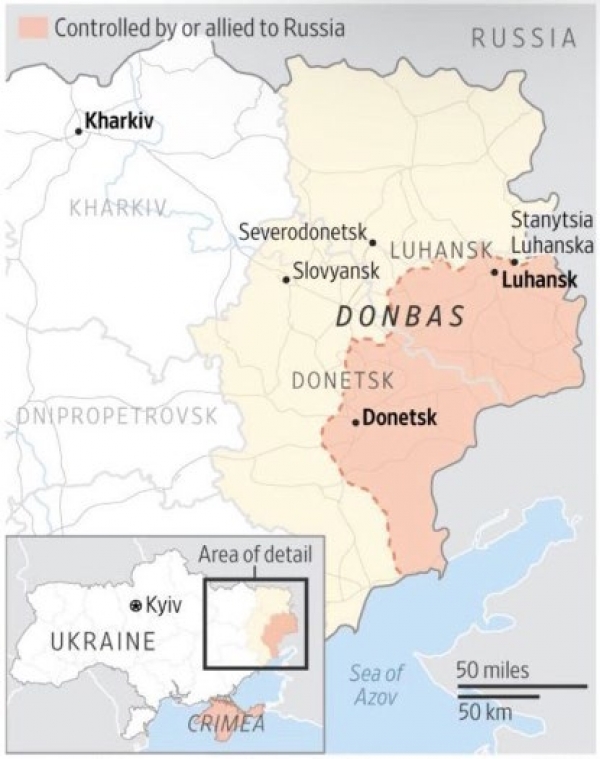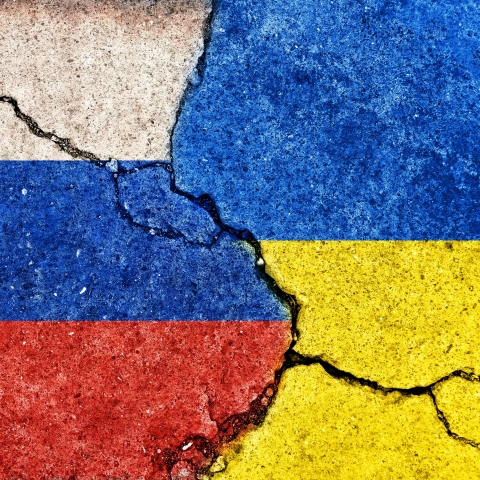The Russia - Ukraine crisis took a new turn overnight, as Russian President Vladimir Putin ordered troops into two breakaway regions of Eastern Ukraine in what the Kremlin called a "peacekeeping" mission. The move came just hours after he signed decrees recognizing the independence of the Moscow-backed regions. During his televised remarks, Mr. Putin expressed historical grievances against NATO and the U.S. and accused Western governments of hostile activities that threaten Russian security. Western leaders are interpreting these latest actions as a breach of international law and a formal denunciation of the Minsk peace agreement. The Kremlin said that Putin discussed his decision with French President Macron and German Chancellor Scholz earlier on Monday. Both of whom expressed their disappointment but indicated their readiness to continue diplomatic talks. Nevertheless, U.S. President Biden and the EU have already announced some sanctions.



At the time of our writing, the market’s reaction is rather muted. The fact that European equity markets are almost flat and gold slightly down the day a UK minister says “Invasion of Ukraine has begun” comes as a surprise to many, or just means that most of the risk is already priced in.
What’s our take on the most recent developments? What are the implications in terms of investment strategy and our portfolio positioning?
The Ukraine – Russian crisis
As discussed in our latest FAQ, our core scenario on this crisis is for tensions to stay elevated but a full-scale conflict being avoided. We continue to view this as the most likely scenario.
Certainly, the fact that Russian tanks are entering the streets of Donetsk means that there is a risk of escalation and that things could easily spiral out of control.
But recent developments could also be seen in a more positive way (at least for markets). A full-scale conflict does not seem to be Mr. Putin’s final objective. By formally recognizing the two breakaway republics’ independence and deploying Russian “peacekeepers,” Mr. Putin seems to burry the 2014-2015 Minsk agreements and favor a new strategy. With the disputed regions being occupied by Russia, Ukraine will be permanently weakened and destabilized, both from a political and economic perspective. It also makes Ukraine’s eventual accession to NATO and the EU even less likely than before. Keeping Ukraine as a “buffer” state was probably the most important objective of Mr. Putin and it seems that he might be successful at doing so. All of this at a relatively low cost. While the U.S. and Europe will impose sanctions on both Russia and the Moscow-backed regions, these sanctions look rather mild. It also seems that Washington does not intend to employ the full panoply of sanctions at its disposal.
Bottom-line: we do not see any reason to panic at this stage. While most of western media comments sound alarming, we might actually get close to “peak fear” on this crisis and there is a high probability that tensions will start to abate from here on.
Nevertheless, the worst case scenario (full scale conflict) can still happen. As such, we are keeping some protection in place (e.g Gold) and will refrain to add Russian assets at this stage (although they are starting to look very attractive from a valuation point of view).
Our portfolio positioning
These developments do not change our current portfolio positioning. It has been our view that equity and credit markets are more at risk from the war on inflation than on a potential invasion of Ukraine. Until we get more clarity on the inflation outlook, volatility is likely to remain elevated and stocks might have to go through more corrective phases.
Since the start of 2022, we have had a positive allocation to equity markets but with some portfolio protection in place (lookback put-spread options) and exposure to broad-based commodities and gold. The recent heightened risk level triggered a modest de-risking of the portfolios (reduced equity between 3% and 4% in balanced portfolios). Nevertheless, we have kept a positive exposure to global equities.
In the near-term, Fed tightening will weigh on equity valuations but we are confident that fundamentals are strong enough to offset the upcoming rate-hiking cycle. With real bond yields still in deep negative territory, investors should keep a near-term view and continue to invest into risk assets.
In the current macro context, speculative investments and unprofitable growth stocks are the most at risk. We thus recommend our clients to focus on quality. Within the context of a well-diversified portfolio, we also favor some tactical exposure to cyclical plays and the less expensive segments, which include international equities and value sectors.
On the fixed income side, we keep a cautious stance. While we believe that equity markets could stabilize in the shortrun, high yield and lower quality investment grade should continue to suffer from declining liquidity, rising interest rates (as investors will be less likely to seek lower ratings for high yields) and tight valuations. We favor long duration, higher quality bonds over higher yield / lower quality names.
Disclaimer
Le présent document a été publié par le Groupe Syz (ci-après dénommé «Syz»). Il n’est pas destiné à être distribué ou utilisé par des personnes physiques ou morales ressortissantes ou résidentes d’un Etat, d’un pays ou d’une juridiction dans lesquels les lois et réglementations en vigueur interdisent sa distribution, sa publication, son émission ou son utilisation. Il appartient aux utilisateurs de vérifier si la Loi les autorise à consulter les informations ci-incluses. Le présent document revêt un caractère purement informatif et ne doit pas être interprété comme une sollicitation ou une offre d’achat ou de vente d’instrument financier quel qu’il soit, ou comme un document contractuel. Les informations qu’il contient ne constituent pas un avis juridique, fiscal ou comptable et peuvent ne pas convenir à tous les investisseurs. Les valorisations de marché, les conditions et les calculs contenus dans le présent document sont des estimations et sont susceptibles de changer sans préavis. Les informations fournies sont réputées fiables. Toutefois, le Groupe Syz ne garantit pas l’exhaustivité ou l’exactitude de ces données. Les performances passées ne sont pas un indicateur des résultats futurs.

